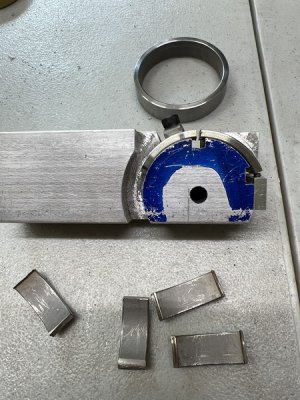- Joined
- Mar 25, 2013
- Messages
- 5,222
I don't know about this "wood" stuff you are referring to. I am cutting screws #4-1/4" and steel/stainless bar stock 1/8 to 1/2".What size of screws are you cutting and what materials of bar stock are you to encounter? For small machine screws you can use a large pair of wire strippers with a screw cutter capability, fast and easy, without leaving a burr or abrasive dust.
limited to 10-32, 10-24 and smaller in soft steel.
For the bar stock, I would recommend the below miter saw. Works well at work for cutting non ferrous metals. Accurate with the end stop to a few thou. Parts can be put to use with the raw saw cut surface some times. This one or the cheap knock off units could also do depending on your needs.
I already have a bandsaw, and a 14" chop saw with metal blade. They are great for larger stock. My small lathe does not part well.
Hmmm. Lots of negative feedback. That is important. Maybe not my next project?










